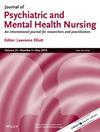Stakeholder perspectives on continuous observation in inpatient psychiatric wards
Abstract
What is known on the subject?
- Continuous observation is often used in mental health wards to support the safety of service users, where they will be constantly watched by a member of staff.
- Evidence suggests that continuous observations may be unhelpful and restrictive, but not enough is known about the practice or the best ways to improve it.
What this paper adds to existing knowledge?
- This evaluation integrates the perspectives of service users, informal carers and staff to explore current continuous observation experiences and inform future improvements.
- While previous research highlights the importance of therapeutic engagement, this study additionally emphasizes how the observation procedure could be adapted to individual needs.
What are the implications for practice?
- Continuous observations could be more beneficial if they are therapeutic, proportional to the level of risk and co-developed with the service user, informal carer and staff.
- Further training about communication could support staff engagement and the observation process could be formalized to ensure regular collaborative reviews.
Introduction
Continuous observation is a frequently used tool to manage high levels of risk on psychiatric wards. However, there is little previous research on its use in practice.
Aim
This qualitative service evaluation aims to explore the continuous observation experiences of service users, informal carers and staff in a local NHS Mental Health Trust, informing suggested future improvements to current practice.
Method
Five service users, three informal carers and seven healthcare staff completed semi-structured interviews, which were thematically analysed to create four themes.
Results
Positive interaction and engagement in activities were critical for a therapeutic approach to observations, supporting service users and staff to minimize the unproductive behaviours that can arise. Difficulties balancing safety with privacy could suggest the importance of proportionate and tailored observation procedures for each service user. Ensuring the voices of service users and informal carers remain central to decisions regarding care could further improve the observation experience.
Implications for Practice
This study highlights therapeutic, proportionate and co-produced observations as key characteristics to improve practice. Further training and formalization of the observation process could foster cultural changes towards more long-term approaches to risk management.

 求助内容:
求助内容: 应助结果提醒方式:
应助结果提醒方式:


